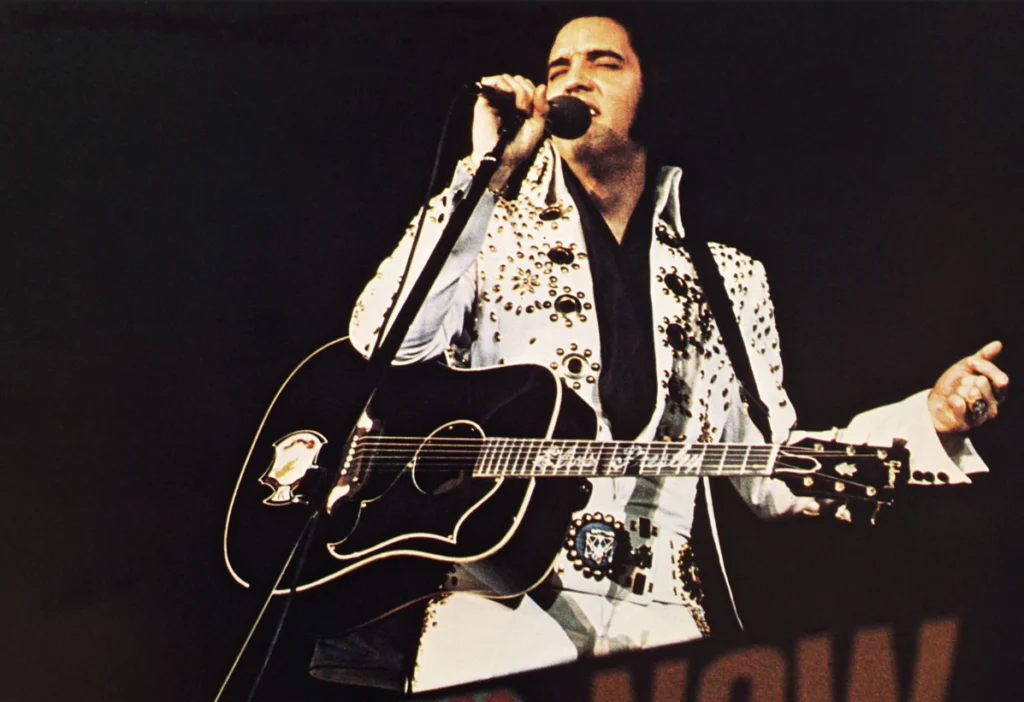The 1970s were a wild ride, weren’t they? Looking back, it’s easy to remember the big headlines and the songs that still get stuck in your head, but there were so many cultural moments that seemed ordinary at the time yet completely changed how we lived, laughed, and loved. These weren’t just trends that came and went – they were seismic shifts that shaped everything from how we watched TV to how we talked to each other at the water cooler the next day.
1. The Death of Elvis Presley (August 16, 1977)
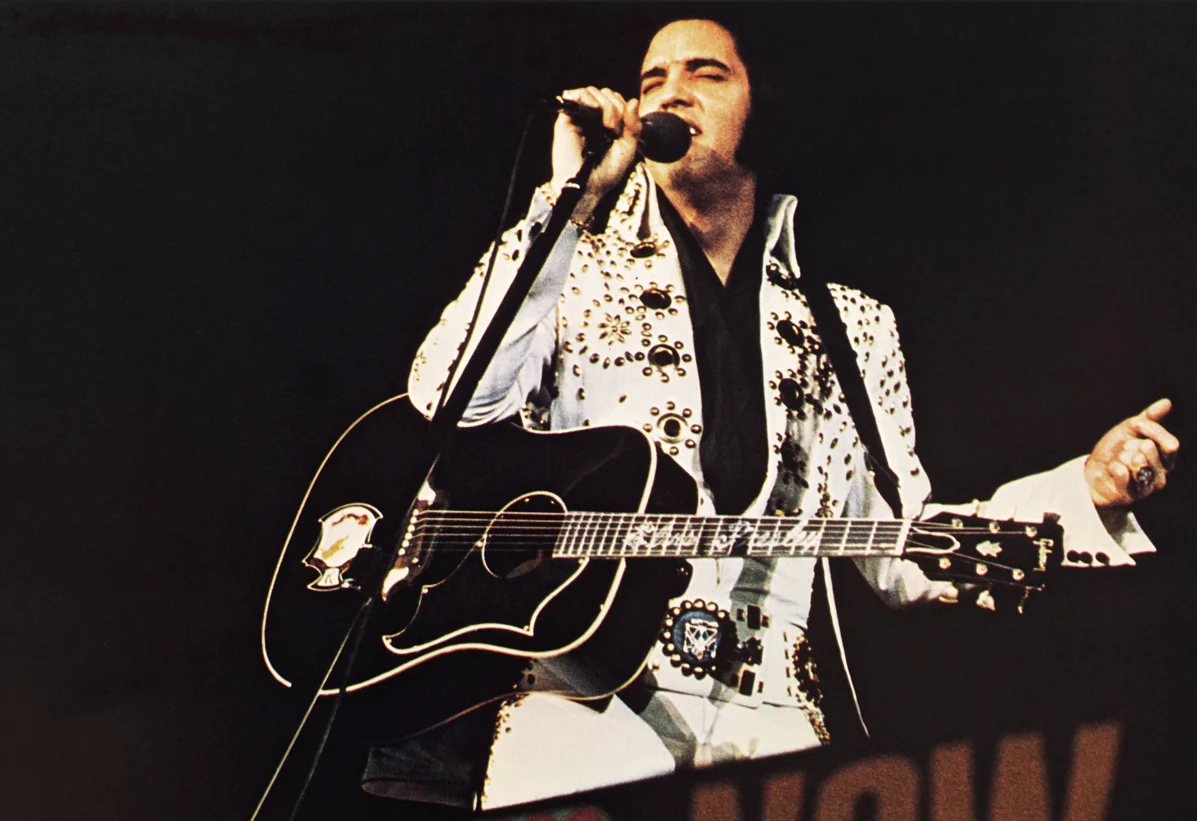
When the King died at Graceland, it wasn’t just the end of a musical career – it was the end of an era that had defined American culture for over two decades. Radio stations across the country immediately switched to all-Elvis programming, and record stores couldn’t keep his albums on the shelves as fans desperately tried to hold onto pieces of the man who had soundtracked their youth. The outpouring of grief was unlike anything the entertainment world had seen, with grown men crying openly in the streets and women fainting at impromptu vigils. Smooth Radio zooms out to see how the entire world mourned the death of a rock ‘n’ roll king.
What made Elvis’s death so earth-shattering wasn’t just his fame, but the fact that he represented the bridge between the innocent 1950s and the rebellious decades that followed. His passing marked the moment when the baby boom generation truly realized they were no longer young, and that their heroes were mortal after all. The wall-to-wall news coverage set the template for how we’d mourn celebrities forever after, turning grief into a shared national experience that brought strangers together in record stores, coffee shops, and living rooms across America.
2. The Launch of Saturday Night Live (October 11, 1975)
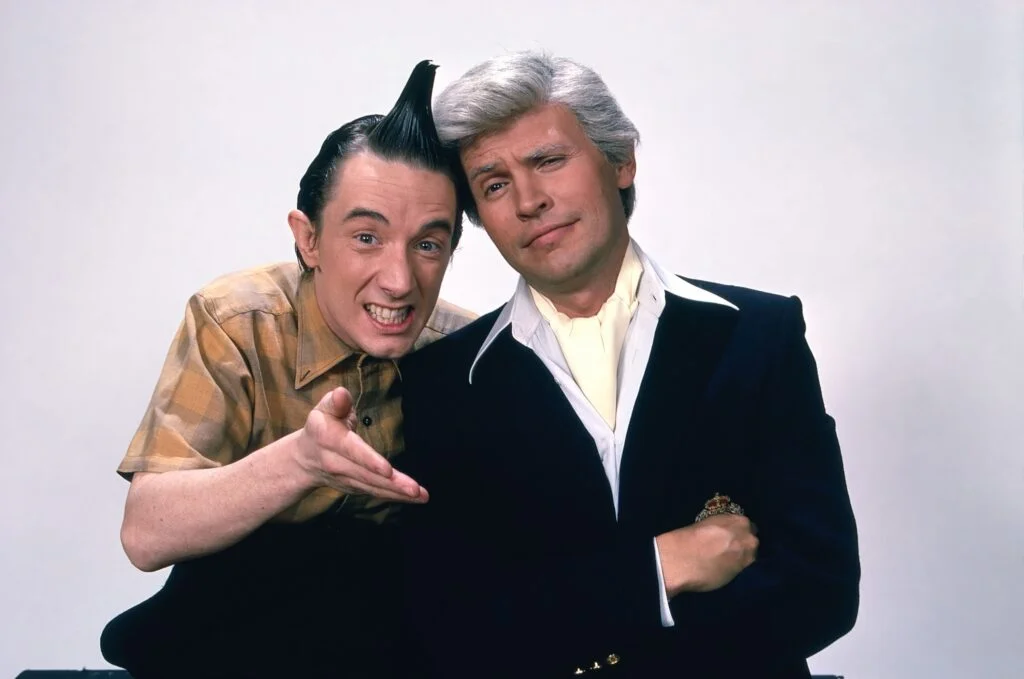
Nobody expected a late-night sketch show to revolutionize television, but SNL’s debut changed everything about how comedy worked on the small screen. The show’s blend of political satire, musical guests, and irreverent humor gave young adults something they’d been craving – entertainment that spoke their language instead of their parents’. Suddenly, staying home on Saturday night didn’t mean you were missing out; it meant you were part of a cultural moment that everyone would be talking about on Monday morning. Forbes takes a trip down memory lane to recall the scope of this event’s impact.
The impact went far beyond laughs, though – SNL became the launching pad for comedy legends like John Belushi, Gilda Radner, and Bill Murray, while simultaneously creating a new kind of appointment television. Before SNL, late-night TV was mostly talk shows and old movies, but now there was something electric happening after midnight that made you want to stay up and be part of the conversation. The show’s influence on everything from political discourse to catchphrases was immediate and lasting, proving that comedy could be just as powerful as any news program.
3. The Premiere of All in the Family (January 12, 1971)
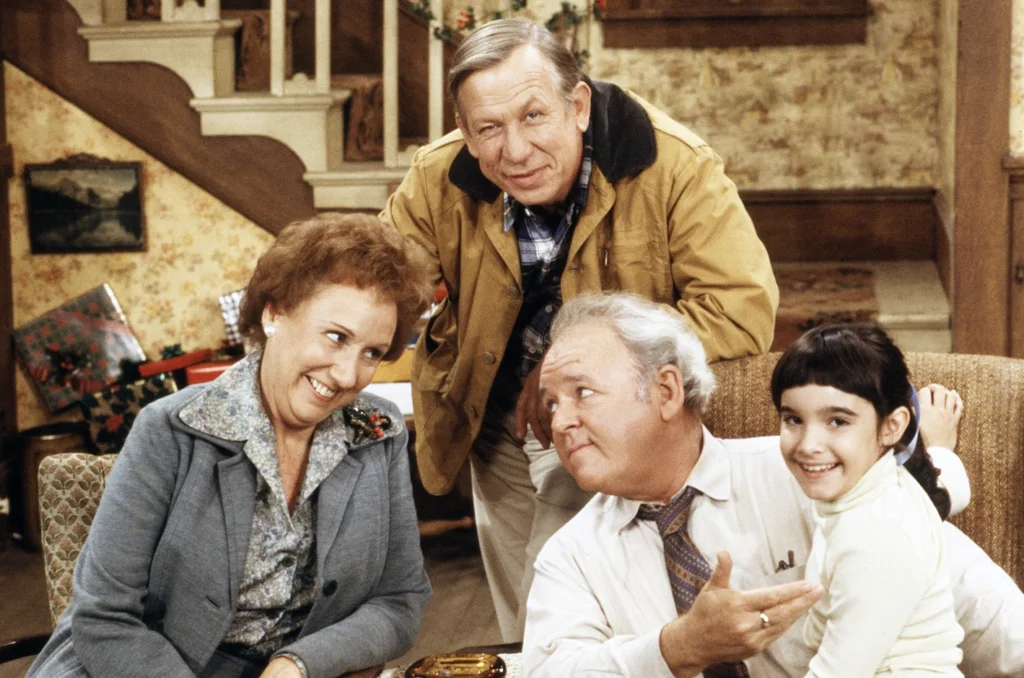
When Archie Bunker first grumbled his way onto television screens, he brought with him conversations that families had never had in their living rooms before. The show tackled racism, women’s liberation, and generational conflict with a frankness that made viewers simultaneously uncomfortable and unable to look away. Norman Lear’s groundbreaking sitcom didn’t just entertain – it forced America to confront its own prejudices and hypocrisies in prime time. Looking back, Time Magazine credits this show with changing TV and America.
The cultural earthquake that followed changed television forever, proving that audiences were hungry for shows that reflected real life instead of sanitized suburban fantasies. Suddenly, every family dinner became a potential debate about the issues Archie and his family were wrestling with on screen. The show’s success opened the door for other socially conscious programming and established the template for using humor to address serious topics – a formula that’s still being used today.
4. The Launch of HBO (November 8, 1972)
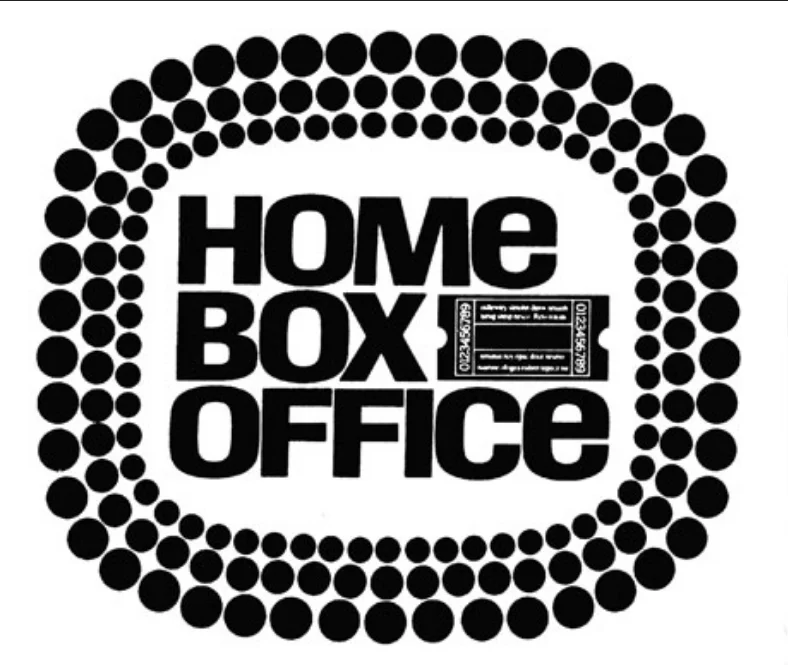
When Home Box Office began broadcasting, most people saw it as just another way to watch movies without commercials – they had no idea they were witnessing the birth of a revolution. The concept of paying for television seemed almost absurd to families who had grown up with free broadcast networks, but HBO’s promise of uncut, unedited entertainment was too tempting to resist. That first night, with its broadcast of “Sometimes a Great Notion,” marked the beginning of the end for the three-network monopoly that had defined American television.
The ripple effects were enormous, though they took years to fully unfold. HBO’s success proved that viewers were willing to pay for premium content, paving the way for cable television to explode across the country. More importantly, it created the first real alternative to network censorship, allowing for more adult themes and language that would eventually transform entertainment. By the end of the decade, HBO had become the model for what television could be when freed from the constraints of advertiser-friendly programming.
5. The Publication of “Jonathan Livingston Seagull” (1970)

Richard Bach’s slim novel about a seagull who dared to fly differently became an unlikely cultural phenomenon that perfectly captured the spiritual searching of the early ’70s. The book’s message about pursuing your dreams and transcending limitations resonated with millions of readers who were questioning traditional values and looking for deeper meaning in their lives. What started as a simple story about a bird became a touchstone for an entire generation seeking personal transformation.
The book’s massive success – it spent 38 weeks at #1 on the New York Times bestseller list – reflected a hunger for spirituality that went beyond traditional religion. People were carrying copies in their purses and back pockets, sharing passages with friends, and using Jonathan’s journey as a metaphor for their own struggles with conformity and self-discovery. The phenomenon showed that Americans were ready for philosophy served up in accessible, non-threatening packages, setting the stage for the self-help movement that would dominate the following decades.
6. The Debut of “The Price Is Right” with Bob Barker (September 4, 1972)
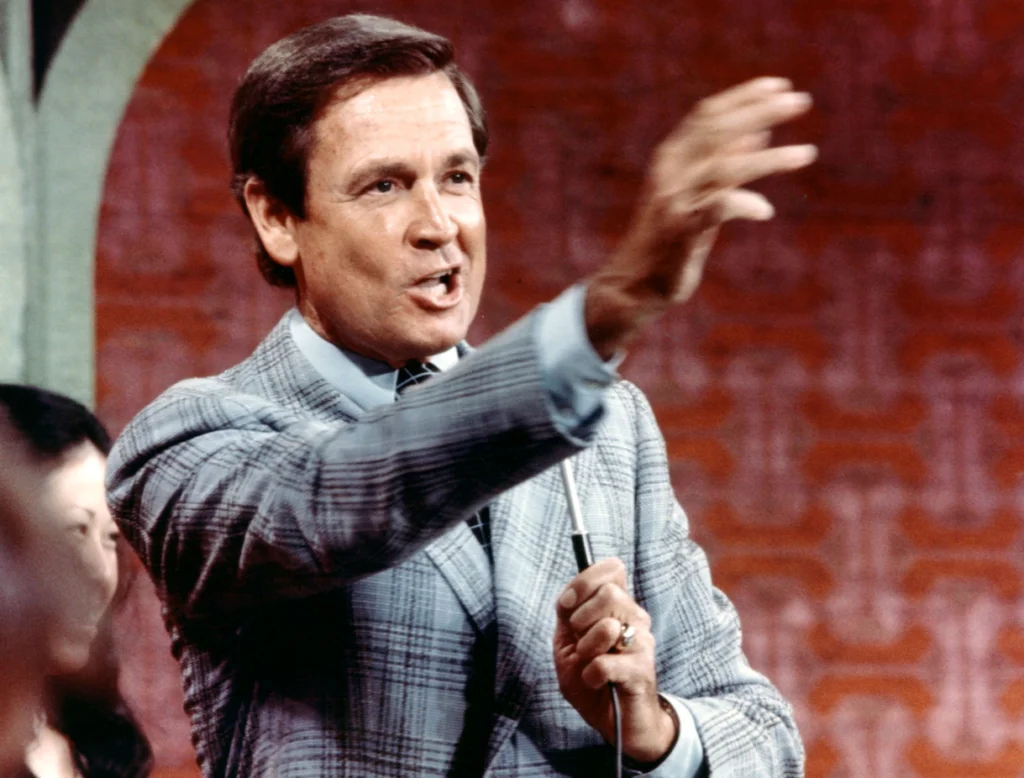
When Bob Barker took over hosting duties from Bill Cullen, he transformed what had been a straightforward quiz show into an interactive celebration of American consumerism. The new format, with its showcase showdowns and spinning wheel, turned ordinary housewives and retirees into screaming, jumping contestants who embodied the pure joy of winning big. Suddenly, staying home during the day didn’t mean missing out on excitement – it meant having a front-row seat to dreams coming true.
The show’s impact on daytime television was immediate and lasting, creating a template for audience participation that influenced everything from talk shows to reality TV. Bob Barker’s gentle authority and genuine warmth made him a trusted friend in millions of homes, while the show’s celebration of material abundance perfectly captured the spirit of an era when prosperity seemed within everyone’s reach. The daily ritual of watching neighbors win cars and vacations became a shared experience that connected viewers across the country, proving that sometimes the simplest pleasures could create the strongest bonds.
7. The Premiere of “Happy Days” (January 15, 1974)
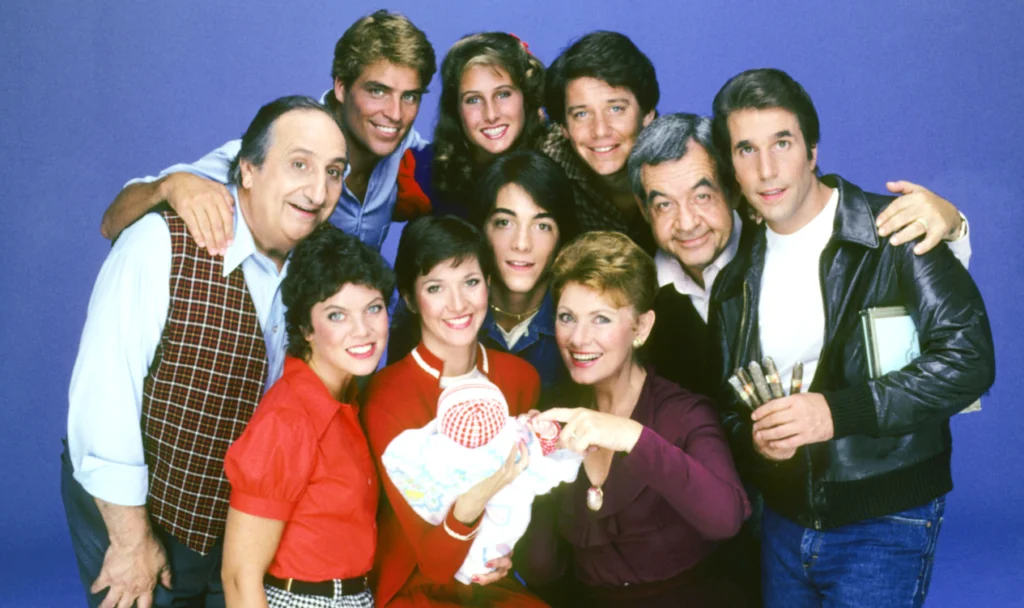
What seemed like harmless nostalgia for the 1950s actually launched a cultural obsession with the past that would define much of the ’70s. The show’s idealized vision of simpler times, complete with Fonzie’s leather jacket and the Cunninghams’ wholesome family values, gave viewers a comforting escape from the turbulent present. Suddenly, everyone wanted to relive an era they remembered as more innocent, even if that memory was largely manufactured by Hollywood.
The show’s massive popularity sparked a nationwide ’50s revival that went far beyond television, influencing fashion, music, and even architecture. Diners started popping up everywhere, complete with jukeboxes and waitresses on roller skates, while the soundtrack to “American Graffiti” climbed the charts alongside contemporary hits. “Happy Days” proved that sometimes what people want most is not to move forward, but to return to a time when the world seemed to make more sense – a lesson that would influence entertainment and politics for decades to come.
8. The Advent of Mood Rings (1975)

When jewelry designer Marvin Wernick introduced his “Mood Ring” to the world, he tapped into the decade’s fascination with self-awareness and emotional exploration. These simple bands, filled with liquid crystals that changed color based on body temperature, gave people a tangible way to monitor their inner states throughout the day. What seemed like a silly novelty item actually reflected a deeper cultural shift toward introspection and the belief that understanding your emotions was the key to personal growth.
The rings became a phenomenon that transcended age groups, with everyone from teenagers to grandparents checking their fingers to see if they were “calm” (blue) or “excited” (amber). The craze spawned countless imitators and variations, from mood necklaces to mood shirts, creating an entire industry built around the idea that your feelings could be measured and displayed. While the science was questionable, the cultural impact was real – mood rings represented the ’70s obsession with getting in touch with your inner self, no matter how trivial the method might seem.
9. The Launch of People Magazine (March 4, 1974)
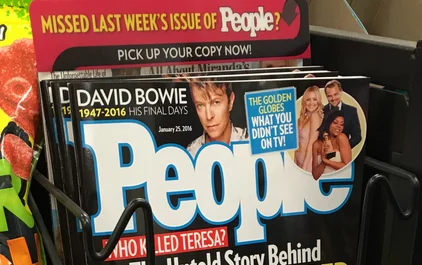
Time Inc.’s decision to create a magazine focused entirely on celebrities and human interest stories seemed like a risky gamble, but it perfectly captured America’s growing obsession with fame and personality. The first issue, featuring Mia Farrow on the cover, promised to show readers the real lives of the rich and famous, offering an intimate peek behind the curtain of celebrity culture. What nobody anticipated was how quickly this formula would reshape not just magazine publishing, but the entire relationship between stars and their fans.
People magazine’s immediate success proved that Americans were hungry for personal details about their favorite celebrities, from what they ate for breakfast to how they decorated their homes. The magazine’s approach – treating celebrities as relatable human beings rather than untouchable gods – democratized fame in a way that had never been done before. By the end of the decade, People had spawned countless imitators and established the template for celebrity coverage that still dominates entertainment media today, proving that sometimes the most powerful cultural shifts come disguised as simple entertainment.
10. The Debut of “Jaws” (June 20, 1975)
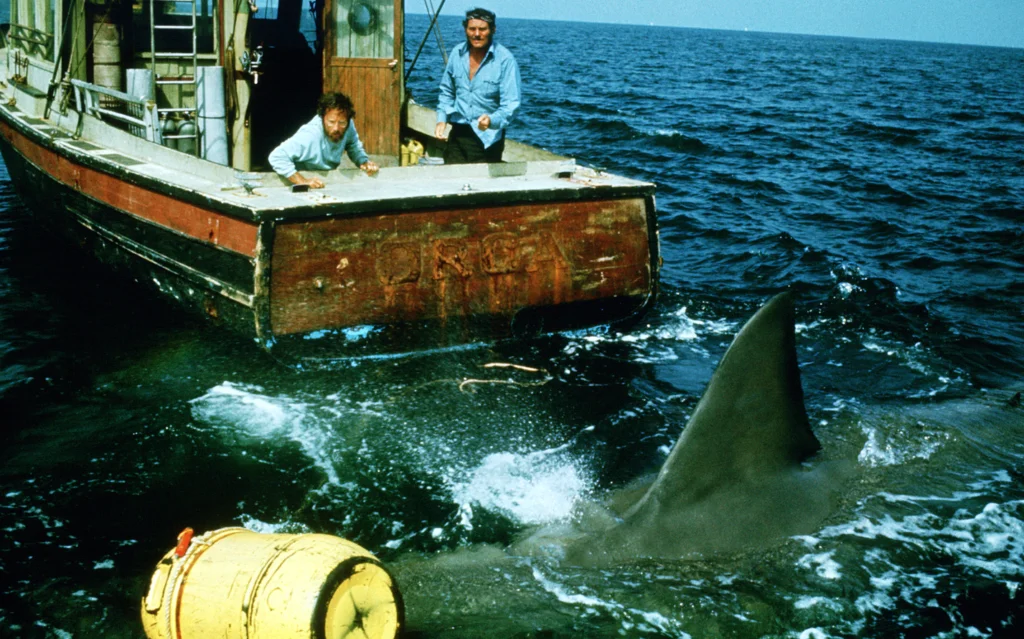
Steven Spielberg’s shark thriller didn’t just scare audiences – it invented the modern summer blockbuster and changed how movies were marketed and released forever. The film’s unprecedented nationwide opening, backed by massive television advertising, created a cultural event that had everyone talking about the same movie at the same time. Lines stretched around theater blocks as families planned their weekends around seeing the film that everyone insisted you simply had to experience.
The movie’s impact went far beyond box office records, though those were impressive enough. “Jaws” proved that audiences would flock to theaters for spectacle and thrills, setting the stage for the franchise-driven Hollywood we know today. More immediately, it created a genuine fear of swimming that lingered long after the credits rolled, with beach attendance dropping noticeably that summer as people couldn’t shake the image of that massive shark lurking beneath the waves.
11. The Rise of Pet Rocks (1975)
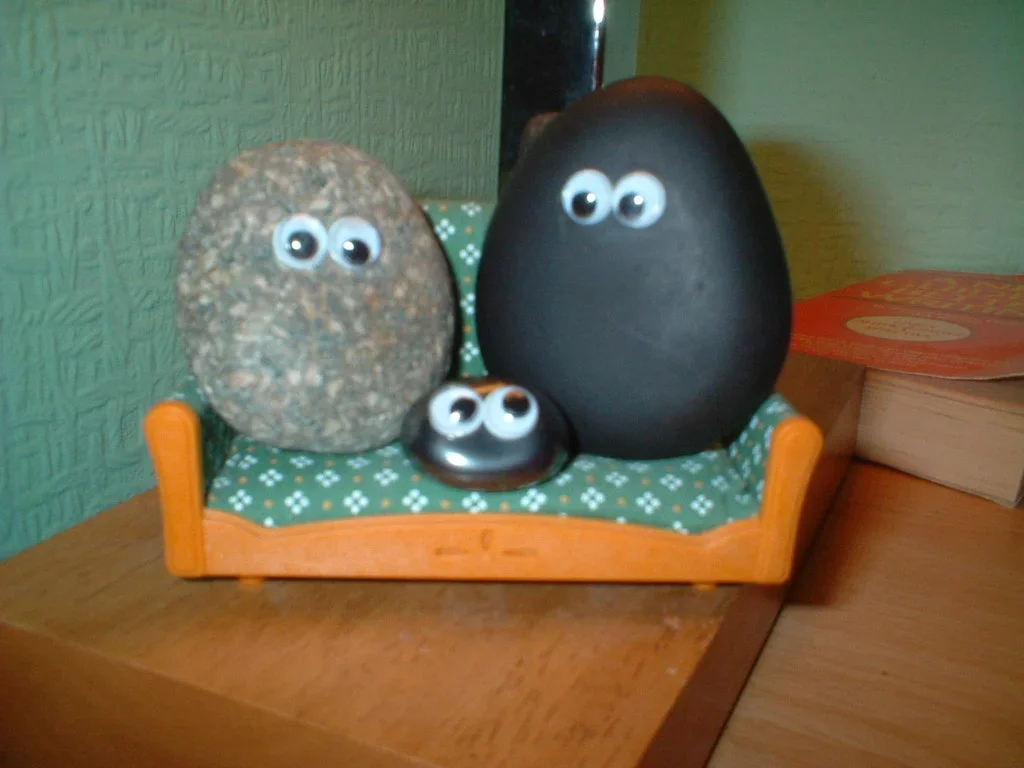
Gary Dahl’s absurd invention – selling ordinary rocks as pets for $3.95 each – became one of the decade’s most unexpected success stories and a perfect symbol of ’70s excess. The joke gift, complete with a manual on caring for your new “pet,” tapped into both the era’s obsession with pets and its willingness to embrace the ridiculous. What started as a conversation piece at a California bar became a nationwide phenomenon that made Dahl a millionaire within months.
The Pet Rock craze revealed something profound about American consumer culture – that people would buy almost anything if it was marketed cleverly enough and seemed to offer a moment of joy or connection. The fad’s rapid rise and fall became a cautionary tale about the fickleness of popular culture, but it also demonstrated the power of humor and simplicity in an increasingly complex world. By Christmas 1975, everyone either owned a Pet Rock or knew someone who did, making it one of those shared cultural experiences that defined the decade.
12. The Premiere of “Three’s Company” (March 15, 1977)
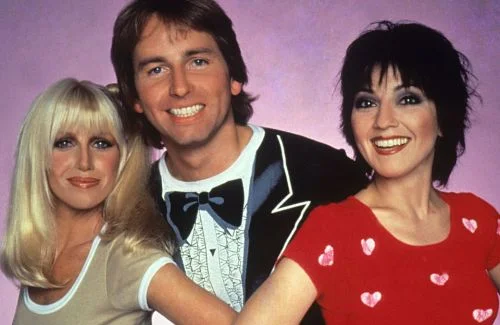
What appeared to be a simple sitcom about roommates sharing an apartment actually pushed boundaries in ways that were revolutionary for network television. The show’s entire premise – that Jack Tripper had to pretend to be gay to live with two women – dealt with topics that had rarely been addressed in prime time, even if the treatment was often more suggestive than explicit. Audiences couldn’t get enough of the innuendo and misunderstandings that drove each episode, making it one of the most popular shows of the late ’70s.
The cultural impact went far beyond laughs, though the show certainly delivered those in abundance. “Three’s Company” normalized the idea of unmarried people living together, a concept that had been scandalous just a decade earlier, while also introducing mainstream audiences to gay characters and themes in a non-threatening way. The show’s success proved that American viewers were ready for more sophisticated humor about relationships and adult situations, paving the way for the more explicit comedies that would follow in the 1980s.
13. The Debut of “Star Wars” (May 25, 1977)
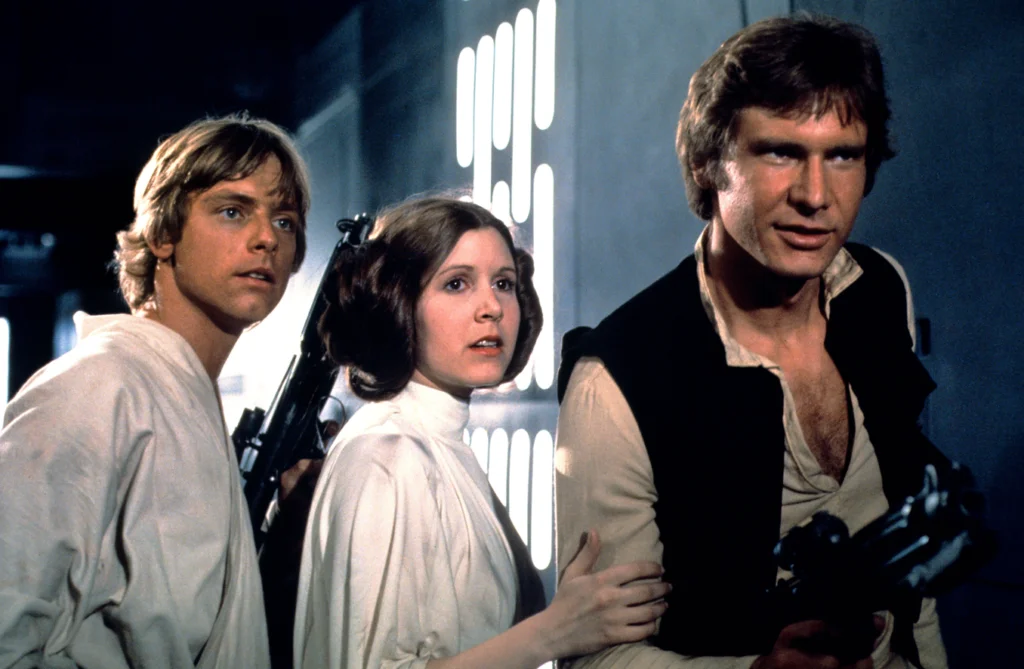
When George Lucas’s space opera opened in a limited number of theaters, nobody predicted it would become a cultural force that would reshape entertainment, merchandising, and childhood itself. The film’s blend of classic storytelling, groundbreaking special effects, and mythic themes struck a chord with audiences who were hungry for heroes and hope after a decade of cynicism and disappointment. What started as a simple adventure story became a modern mythology that gave families a shared language of references and dreams.
The movie’s impact extended far beyond the theater, creating the modern concept of the multimedia franchise and proving that audiences would eagerly consume any product connected to a story they loved. Action figures, lunch boxes, and bedsheets turned “Star Wars” into a way of life rather than just a movie, while the film’s success convinced Hollywood that science fiction could be profitable and prestigious. By the end of 1977, “Star Wars” had become more than entertainment – it was a cultural touchstone that united generations and established the template for how blockbuster entertainment would work for decades to come.
The 1970s gave us more than just great music and questionable fashion choices – they delivered cultural moments that quietly revolutionized how we lived, laughed, and connected with each other. These weren’t just trends that came and went; they were the building blocks of the modern entertainment landscape we still navigate today. Looking back, it’s clear that what seemed like simple entertainment was actually the foundation for everything from reality TV to social media, proving that sometimes the biggest changes come wrapped in the most familiar packages.

